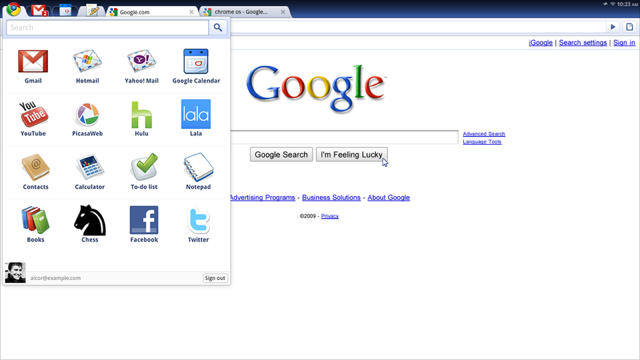- Usb To Parallel Adapter Cable
- Parallels For Mac Network Settings
- Parallels For Mac Network Adapter Not Working
- Parallels For Mac Support
- Network Adapter Mac Address
I have a macbook pro. Recently I installed parallels desktop on it. But the problem i have is when I connect a usb device to my macbook it is not being detected in the windows parallel desktop. Also I have no idea how to get right click options in the parallel windows desktop. Can you please help me. Thank you for your help in advance.

In the Parallels virtual machine settings for the Windows 7 Machine, set up the networking as Bridged (rather than NAT or Shared), then there should be an option to select which network interface to connect to. Finally, if you are running Parallels and you find that your USB devices are being captured by Mac OS X but not your virtual guest OS, you can also go to the Devices menu, find the peripheral in question, and choose it to have Parallels wrest control from Mac OS X and hand it to your guest operating system.
I have to admit that I was stymied for a long time about how to right-click within Parallels, a great virtualization application available for Mac OS X that lets you run Microsoft Windows XP, Windows Vista, Linux and a variety of other operating systems within Mac OS X. Plug in an external two-button mouse, of course, and the right click just works, but within Parallels?
The secret is to hold down the Control-Shift buttons when you click on the mouse within Parallels. I found that out by actually reading their documentation (imagine!) after puzzling through the problem for far too many hours. Your Control key might well be labeled “Ctrl” on your MacBook Pro, as it is with mine, of course.
The USB device question is straightforward too. In the Preferences for Parallels you can specify whether you want USB devices to be auto-connected upon detection or not. Sounds like you have this option turned off. To change it, you need to shut down your virtual machine, if it’s running, and then choose Edit –> Virtual Machine…, within which you’ll find one of the options is:
On mine you can see that I have my Connection Options set to “Connect to Guest OS”: yours is set to “Connect to Mac OS” instead. A good third alternative, by the way, is to simply choose the option “Ask me what to do”, which means that every time it detects a new USB device, you’ll have the option of letting Parallels have it or let Mac OS X have it.
Finally, if you are running Parallels and you find that your USB devices are being captured by Mac OS X but not your virtual guest OS, you can also go to the Devices menu, find the peripheral in question, and choose it to have Parallels wrest control from Mac OS X and hand it to your guest operating system. If the peripheral is checked, Parallels owns it, and if it’s not checked, the Mac operating system owns it:
As you can see, Parallels has stolen control of my Apple iPhone from the Mac operating system and the Mac side can’t see it. Interestingly, when hooked up this way, the phone doesn’t appear to charge from the USB connection, but when I release it from Parallels (by simply selecting it in this Devices menu) it syncs up with iTunes on my Mac and charges from the USB cable too.
That should get you going a bit more efficiently with Parallels. Enjoy!
Let’s Stay In Touch!

I got an error whilst installing Windows 10 from .iso file as virtual machine via Parallels 9 on OSX 10.10 which read something like: Media driver missing. It leaves you in a loop which requires you to add the drivers. But you cannot install any cause there are no suggestions.
Now the main issue seemed that the iso wasn't on a bootable device which is what most sources say you need to do. Obviously that seemed like an unneeded step and i got the installation going. Mostly because you were already inside the installation that had been booted in the first place.
Software i use:OSX 10.10 (latest)Parallels 9 (latest updates, i know Parallels 10 is out)Windows 10 iso from http://preview.windows.comVM setup with iso from external HD (NTFS) and locally stored.
So what to do?
(see my answer below)
MartinspireMartinspire3 Answers
What you can do is shut down your virtual machine (close out the installation first to make sure). Go to the settings of the parallels by clicking:
-> Menubar: Virtual Machine
->Configure
->Hardware tab
->CD/DVD 1 (where your image is inserted)
->Location dropdown
-> Select IDE 0:1 (instead of SATA 0:1)
-> Restart VM
Usb To Parallel Adapter Cable
Done!
Installation will continue normally and you can start trying Windows 10 from Parallels 9 on your Mac.
Parallels For Mac Network Settings
I'm not sure if this works for Parallels 10 (i think so) and i'm also not sure if this will work for other (older) Windows installations. But to remove the steps required for making a bootable disk is good enough for me.
MartinspireMartinspire
You can tell to parallels to install it as windows xp and it will work fine.
Parallels For Mac Network Adapter Not Working
This issue occurs, also, when you have a MacBook Pro (10,2 or similar) without a DVD drive, while installing Windows 10 via USB.
So, during the Parallels 10 or 11 Guest setup, choose to configure using an ISO instead.
protected by Community♦Apr 2 '16 at 14:28
Parallels For Mac Support
Thank you for your interest in this question. Because it has attracted low-quality or spam answers that had to be removed, posting an answer now requires 10 reputation on this site (the association bonus does not count).
Would you like to answer one of these unanswered questions instead?